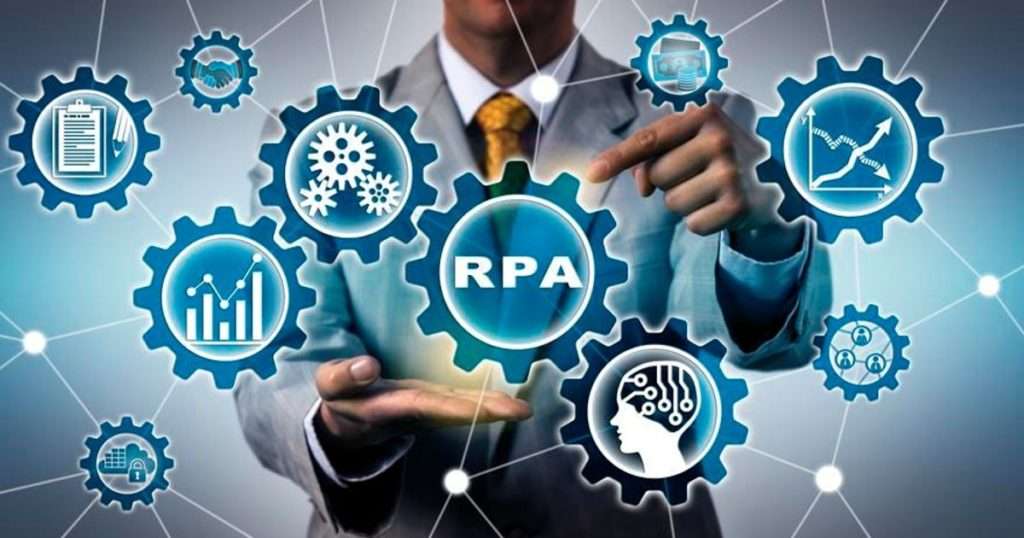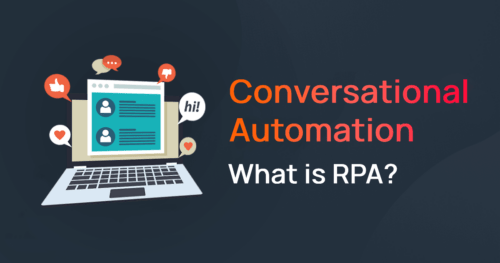Introduction to Conversational AI Automation
In today’s fast-paced business world, automation is no longer a luxury but a necessity. Conversational Automation is a game changing technology that automates interactions with customers, employees and other stakeholders through human like conversations. It uses artificial intelligence (AI), natural language processing (NLP), and machine learning to create virtual assistants that can understand and respond to user queries.
Conversational Automation intersects with Robotic Process Automation (RPA) by enhancing customer facing workflows and automating routine tasks. Unlike traditional RPA, which focuses on back end processes, Conversational RPA enhances front end, customer-facing interactions, providing a more natural and intuitive user experience.
What is Conversational Automation?
Conversational AI Automation refers to the automation of interactions within enterprises using conversational AI systems. By leveraging artificial intelligence, NLP, and machine learning, conversational automation allows AI assistants to understand and respond to user queries in real time. This means faster and more accurate responses for customers and more efficient operations by automating routine tasks and workflows.
So enterprises can streamline communication, reduce the workload of human agents, and deliver a seamless user experience.
Conversational Automation Benefits
The benefits of conversational automation are many and significant. One of the biggest is enhancing users experience. By providing personalized interactions, businesses can understand customer needs and respond accordingly, resulting in increased loyalty and retention. This personalized approach meets and often exceeds customer expectations, creating a positive customer experience that drives growth.
Conversational automation also boosts operational efficiency. By automating repetitive tasks, businesses can reduce workload on human agents so they can focus on more complex and strategic tasks. This means more productivity and less operational cost. Plus, conversational automation provides valuable insights into customer conversations, preferences and behaviors. These insights can inform marketing, product development, and customer experience initiatives so businesses can make data driven decisions that drive growth and customer satisfaction.
What is RPA?
According to the AI Terms Glossary stands for Robotic Process Automation. RPA is like having a digital workforce that can perform routine business tasks for you. Think of it as employing software robots or AI-powered tools to handle repetitive jobs, such as data entry or processing invoices, so your human team can focus on more complex and creative work. These technologies automate repetitive tasks, streamlining workflows and enhancing operational efficiency.
This isn’t the same as traditional robot software, which controls physical robots. Instead, it’s about software “bots” that operate within your computer systems to do mundane tasks and make your business more efficient.
Robotic Process Automation History
The roots of RPA go back to the early 2000s. Pioneers of this industry, such as Blue Prism, focused on screen-scraping to help automate Windows desktop applications. Because the technology was fairly rudimentary, little attention was paid to RPA. Nowadays, AI-driven Robotic Process Automation has made huge strides in driving immense business growth.
Yet, growth continued, especially when UIPath came onto the scene. The founder and CEO, Daniel Dines, realized that enterprise automation software was woefully inadequate for customer needs. The option of Business Process Outsourcing (BPO) was also showing its limitations. So Dines built a platform that made it easier to focus on automating discrete tasks relatively quickly—say in a couple of months—by using drag-and-drop workflows to create bots for repetitive tasks. These bots interface with various digital systems, applications, and data sources, ensuring tasks are executed accurately and promptly.
The market exploded, as did the growth of UiPath. One of the company’s investors, Sequoia, noted that this was the fastest-growing enterprise software company ever. But despite all the success, the RPA market still has problems. And this has opened up even more opportunities for new approaches and innovations.
AI and RPA
Yes, this is quite buzzy. But with RPA, AI has the potential to move the needle in a big way by highlighting the key benefits. The reason is simple: RPA involves a huge number of keystrokes. This data can then be turned into valuable insights.
One that holds much promise is Conversational RPA. It’s really about the next generation of this industry, and the market is certainly ready for it. What then are AI-driven RPA and Conversational RPA? Let’s take a look:
How is RPA related to Conversational Automation?
RPA and conversational automation can be connected as both are about streamlining and improving user experience, just in different areas of the business. RPA automates behind the scenes, rule-based tasks, while conversational automation improves the customer facing part by offering automated and personalized interactions through chatbots or voice assistants.
Good collaboration across departments and projects is key to successful Conversational AI, so that solutions are integrated and usable by more than just a handful of developers.
In an integrated setup, conversational automation could collect user information, conversations, or preferences and trigger an RPA bot to do a specific task, and deliver a seamless end to end automated experience.

Conversational RPA
Conversational RPA is changing the way businesses interact with customers by enabling continuous operation without human intervention.
This technology can resolve queries quickly and enhance customer satisfaction as it can manage routine interactions and limit human involvement to complex scenarios, showing its operational efficiency and improving brand perception.
Cloud-Native Software
Because the RPA industry is maturing, the technology stack has lagged. Much of the core software remains on Windows/.Net infrastructure. While there are often cloud components to core systems, such as with orchestration, the tools are often on-premises.
However, this presents some nagging problems. For example, it can be nearly impossible to capture enough data for important efforts like analytics, machine learning, and AI. Next, as RPA vendors come out with new versions of their software, maintenance can be a challenge.
Conversational RPA, on the other hand, is cloud-native. From inception, the architecture allows for complete data visibility and seamless management of the bots. This means that enterprises can gain ongoing insights about what’s happening without having to deal with the hassles of new versions conflicting with older workflows.
Support systems integrate with existing workflows to deliver personalized and efficient customer interactions across various digital channels, ultimately improving customer satisfaction and operational efficiency.
Business Process Automation
Conversational automation isn’t just for customer-facing applications; it can also be used to automate internal business processes. By integrating conversational AI with core systems, you can automate tasks like data entry, document processing and workflow management. This leads to huge operational efficiency, reduced errors and increased productivity.
Also, conversational automation can handle complex tasks like lead qualification, sales forecasting and customer segmentation. By automating these processes, you can make better decisions, streamline operation,s and drive growth. The ability to automate both simple and complex tasks makes conversational automation a versatile tool that can touch many parts of the business.
Core Systems Integration
To get the most out of conversational automation, you need to integrate it with your core systems like customer relationship management (CRM), enterprise resource planning (ERP) and supply chain management (SCM) systems. This allows conversational AI to access the right data, understand the customer context and respond accordingly.
By integrating conversational automation with core systems, you can automate processes like order processing, inventory management and shipping. This leads to huge efficiency, accuracy and CSAT gains. The seamless integration of conversational AI with core systems means you can deliver a consistent and high quality customer experience across all touchpoints.
Conversational AI Platforms
Conversational AI is the heart of conversational automation. These computer programs use natural language processing and machine learning to understand user input, intent, and context and respond accordingly. By using these advanced technologies, conversational AI chatbots can provide human-like interactions that enhance the customer experience.
A conversational AI platform can be deployed on various channels like messaging apps, AI voice bots, and websites to provide omnichannel customer experiences. They offer 24/7 support, answering frequently asked questions and helping customers resolve issues quickly and efficiently. As benefits of conversational AI platforms include their capabilities to automate complex tasks like customer segmentation, lead qualification, and sales forecasting. This not only improves operational efficiency but also drives business growth and revenue by allowing you to respond to customer needs and market demands.
Conclusion
In summary, conversational automation (RPA) is the technology that has evolved to drive business efficiency and customer satisfaction. While traditional RPA automates back-end tasks, new technologies like AI process automation use AI to automate front-end, customer-facing interactions and workflow automation for employees.
The landscape is moving towards more dynamic and intelligent solutions with Agentic workflows and agentic orchestration. These enable businesses to create more adaptive and autonomous systems that not only automate tasks but also manage complex processes. By coordinating multi-agent systems in one framework, Agentic AI improves decision making and response times, making conversational automation smarter and more context-aware.
Despite the challenges (especially around technology stack and user experience), the next wave of innovation will come from solutions that integrate these advanced capabilities seamlessly. Startups and innovators will drive this change and offer more intuitive, efficient, and scalable Conversational RPA. Want to see this in action? Book an AI demo today.

